© ROOT-NATION.com - Use of content is permitted with a backlink.
Memory is essentially the unseen hero of any smartphone’s performance. If you don’t know why this is, the following text will answer some questions. I’m sure you’ve seen the abbreviation UFS many times, which is often found in news, articles, and smartphone reviews on our website or other resources. It’s worth noting that it has nothing to do with NFC, and even less to do with UFC: it’s a flash memory standard used in most modern portable devices, such as smartphones or tablets. We have collected everything you need to know about the types of memory in your phone, focusing on the latest UFS 4.0 standard, which in 2023 has just begun to conquer the market along with new smartphones.
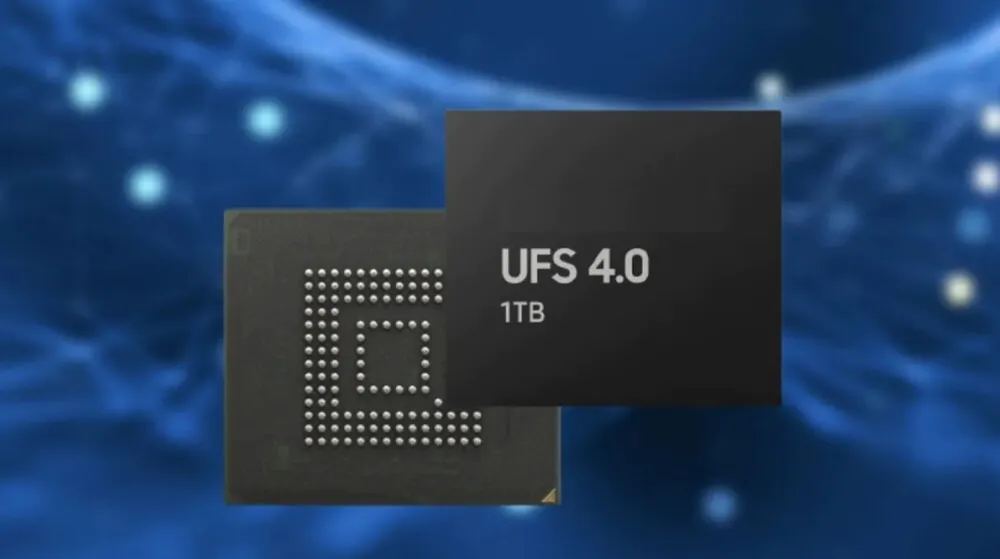
Without UFS storage, modern smartphones would not be the same
Five years ago, eMMC was sometimes used as storage in ordinary smartphones. However, this has changed to the point where eMMC is now very rarely used, and it’s mostly in the cheapest mobile devices… and that’s a good thing. This type of memory began to be replaced only eight years ago, although the first version of the UFS standard was premiered back in 2010.
UFS (Universal Flash Storage) is developed by the Joint Electron Devices Engineering Council (JEDEC), a committee of the Alliance of the electronics industry. JEDEC is also behind such standards as eMMC (flash memory) and DDR (RAM or video memory). UFS drives gained popularity in 2016, although the first prototypes of this technology appeared two years earlier. Until then, smartphones were mostly equipped with eMMC (Embedded Multimedia Card) storage. The key advantage of UFS over eMMC is the ability to work simultaneously for writing and reading. In addition, the new generation of flash storage requires less power. Despite the release of several versions, eMMC has not been able to come close to UFS.
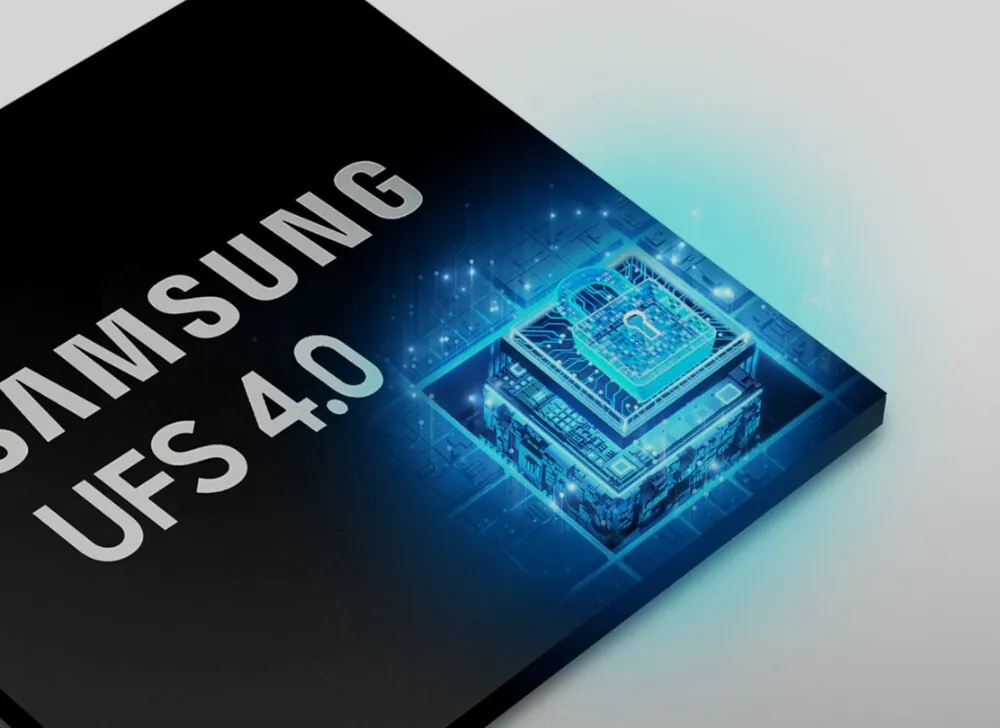
The UFS standard defines the specification of flash memory used in various types of consumer electronic devices. It was created primarily to provide greater storage performance and to protect the market from confusion related to adapters. Today, we know that this was the right move because UFS quickly gained support. Several versions have already been developed: UFS 1.1 in 2012, UFS 2.0 a year later, UFS 3.0 in 2018, and UFS 4.0 is still in the process of “conquering” the market.
Each successive version of UFS has delivered even higher performance, and its evolution has continued with the development of NAND flash memory technology. In practice, UFS memory consists of the same thing as any solid-state drive, many chips with a built-in controller. So we can say that this type of memory is a miniature SSD that comes to our smartphones to make them work even faster.
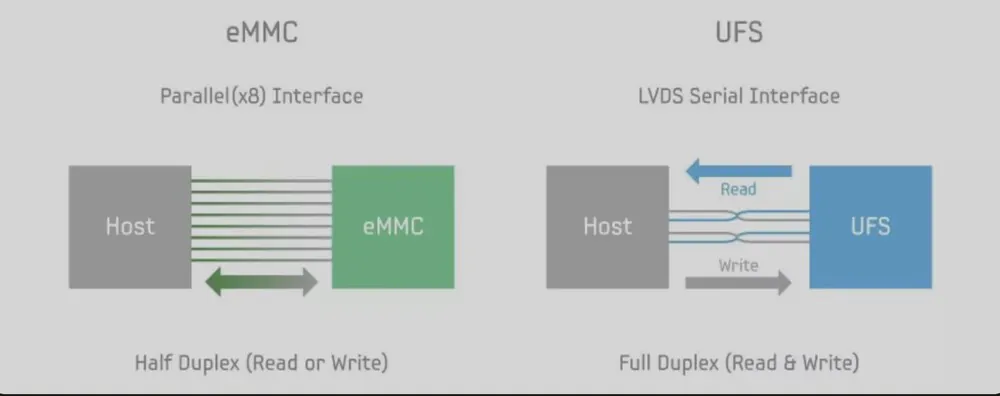
However, despite the fact that there is a significant technological gap between UFS 1.0 and UFS 4.0 in terms of semiconductors, the innovative solutions of the very first version of this memory had great advantages over eMMC. After all, instead of an 8-channel half-duplex parallel interface, it used a full-duplex LVDS serial interface, providing much faster data transfer in general.
The first version of UFS memory, which Toshiba Memory (now Kioxia) began to market in 2013, did not make it to smartphones very quickly. In fact, the first models to feature this memory were the Samsung Galaxy S6 family of smartphones, which debuted in April 2015. The next were the Samsung Galaxy S7 smartphones, and it was in these models that the second generation of UFS memory first appeared, providing a maximum bandwidth of 1200 MB/s, which is four times higher than its first versions.
So, as you may have guessed, the latest version of UFS 4.0 guarantees even faster transfer speeds, but before we get to this memory standard, let’s look at the most important question – why do we need faster drives in smartphones in the first place? Despite the obvious, it’s more important than you might think.
Read also: Expanding RAM in a smartphone: what it is and how it works
Why do we need faster memory in smartphones
Anyone who has ever compared the speed of a hard drive to an SSD drive, or a USB 2.0 flash drive to USB 3.1 speeds, understands the importance of more efficient storage. Although in the case of smartphones, the differences between the generations of UFS memory are not as large as in the above examples (which are based on semiconductor memory, which is efficient, especially for random reads), they are still significant. In fact, if it were not for the use of more efficient storage, the increasingly fast SoC systems in smartphones would not be able to make such a big impact on their performance.
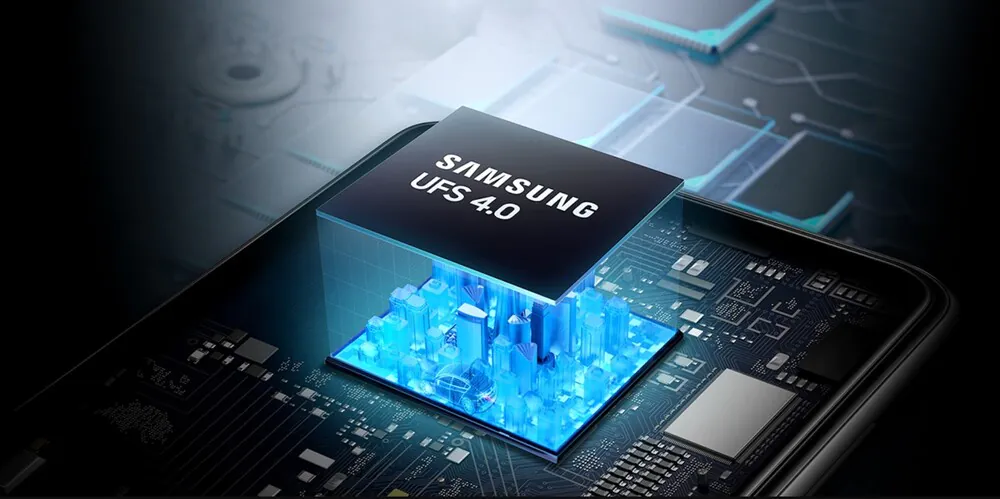
Massive memory can directly affect the smooth operation of the system, speeding up program loading and data transfer, and positively affecting multitasking. After all, each program initiates processes when it is turned on, which, in turn, need data, so the faster this happens, the faster the disk provides the necessary data, the smoother your smartphone will work. I talked about this in more detail in the article about SSDs for computers.
Read also: SATA vs M.2 SATA vs M.2 NVMe: what makes them different and which SSD is better?
Features of the UFS 4.0 memory standard
UFS 4.0 is something new on the market. Samsung announced the new standard last August, two years after the premiere of UFS 3.1, which was used in last year’s flagships. Meanwhile, mid-budget smartphones still mostly use UFS 2.X memory. Comparing the capabilities of UFS 4.0 with UFS 3.1, it is impossible not to notice that this is not a small evolution, but a real revolution. Samsung rightly claims that the latest version of UFS offers much better transfer speeds, energy efficiency, and even physical space savings on the motherboard.
In detail, the company managed to increase the transfer speed per lane to 2900 MB/s, which is twice as much as the UFS 3.1 standard and four times as much as UFS 2.1. With two lanes in the storage subsystem, the maximum throughput reaches 5800 MB/s, but in practice we can expect 4200 MB/s for reads and 2800 MB/s for sequential writes. This is the level offered by NVMe SSDs on PCIe 3.0×4, although we must understand that operations with small data samples are a completely different story.
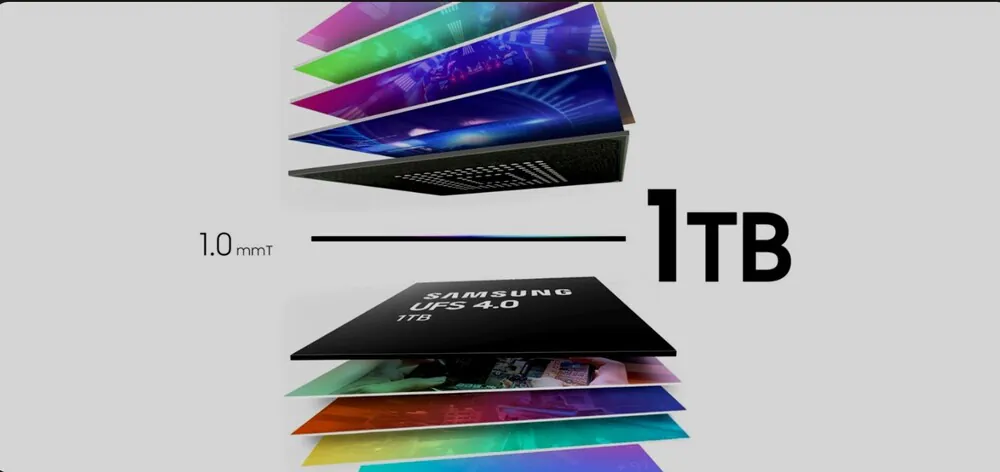
All this with a 46% reduction in power consumption, but it should be remembered that this result is not in the context of total power consumption, but rather the performance factor per milliampere (6 MB/s per mA). In terms of size, Samsung was able to fit up to 1 TB of memory into a rectangular system measuring just 13x11x1 mm, thanks to 7th generation V-NAND chips. However, that’s not all, as the company claims to have also taken care of security issues by increasing the resistance to RPMB (Replay Protected Memory Block) attacks by as much as 180% through the introduction of a new physical block.
Smartphones with UFS 4.0
Most of us will probably have to wait a bit for UFS 4.0, because only flagship smartphones will get this standard in the next year, and probably two. An example of this is the Samsung Galaxy S23 Ultra, which debuted on February 17 and is currently available at a space price of about $1500. UFS 4.0 memory is also used in the OnePlus 11 model, which can be purchased for $830, the Vivo X90 Pro, and the flagship Xiaomi 13 Pro, which is just entering the market at a price of up to $1350.
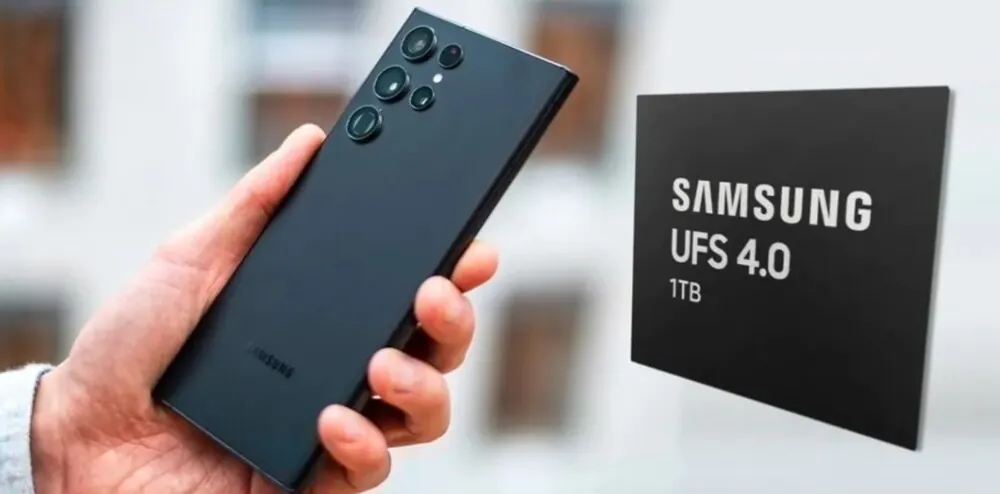
So only the tests of these smartphones will show how UFS 4.0 works in practice, but of course, this memory will not only go to our new phones. I’m sure that over time, the new UFS 4.0 standard will reach other gadgets and, most likely, advanced car systems. We will definitely tell you about all this on our resource.
Read also:
- Six Proven Strategies to Monitor Productivity and Boost Performance
- ChatGPT: Simple instructions for use

